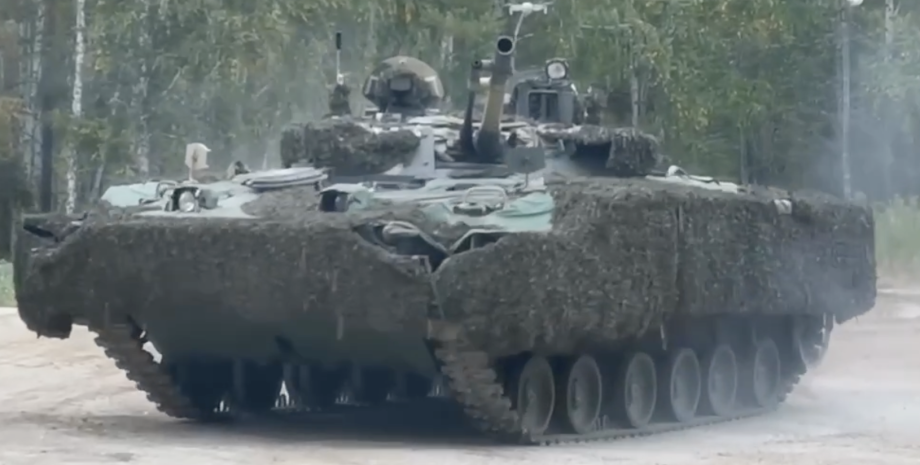
 By Eliza Popova
By Eliza Popova
In the published video, the Soldier of the Armed Forces of the Russian Federation thanks for the help of one of the groups, but the observers drew attention to the fact that it was behind-BMP-3 with dynamic protection "Cactus". The development of this protection began in the 1990s by the Omsk Design Bureau of exact mechanics (OKBTM). In the 1990s, the development of Western ammunition had almost linear growth in armored-test.
Every year, a 120-mm subcaliber projectile added about 36 mm in the ability to punch armor. Because of this, there was a need to create a new dynamic protection, because Russian tanks T-72B, T-80U and T-90 were lagging behind in security. So OKBTM began to develop a new dynamic protection for protection against tandem and cumulative ammunition. The Cactus Project provided for the creation of modular protection for the case and tower of machines.
When struck by armor-pierce or tandem cumulative projectile into the cover of the protective block, there is the following: the main disadvantage of "cactus" was the need to seriously change the structure of the tank to establish dynamic protection. Such works could only be performed at tank or repair plants, in the field it is impossible to integrate development. The case did not go further to create experimental samples.
Therefore, in the Russian Federation they preferred the "reel", which is much simpler and cheaper in implementation. He was adopted by the Russian Federation in 2006. In fact, "reel" is the development of "contact-5". The main works were aimed at improving the counteraction of modern means of damage, as well as increasing the possibility of protection against tandem cumulative ammunition. However, Relykt does not solve the main problem - protecting the tank from Western ammunition.
In addition, the spread of Javelin, Spike and other 3rd generation PTRCs have jeopardized the upper projection of the tank. If the BMP is set a normal dynamic protection type, then the crew will suffer when it is triggered. Testing has shown that the DA in the light -arranged equipment works inside through a weak booking of the machine. Therefore, dynamic protection required other explosive substance and the principle of counteracting the means of damage.
Therefore, in 2022, the Russian Federation returned to the development of dynamic protection "Cactus", but for light -hearted equipment. The container has a 4C24 marking. It provides protection against cumulative effects, which can be compared with the dynamic protection of the first generation "Contact-1", but contains twice less of the explosive substance.
To prevent damage to the lightweight body, the dynamic protection elements are placed in the container between the layers of polymer material. This design is aimed at the destruction of the cumulative jet, while maintaining its main function - reducing punching. It is known that the Kactus kit for BMP-3 covers 62% of the area area, 36% of the frontal part of the housing and 70% of the tower. The total weight of protection is 4200 kg.
It is also created in such a way that it is not to respond to a smaller caliber shells. It is unknown how protected the BMP-3 with Cactus Against FPV-Dies and Western equipment, which is not weaponed to the Armed Forces. For example, a 25mm Bushmaster II automatic gun on BMP Bradley. Also, such infantry fighting vehicles have not yet been spotted on the battlefield, so it is unknown how many in the Armed Forces of the Russian Federation is BMP with such dynamic protection.










All rights reserved IN-Ukraine.info - 2022